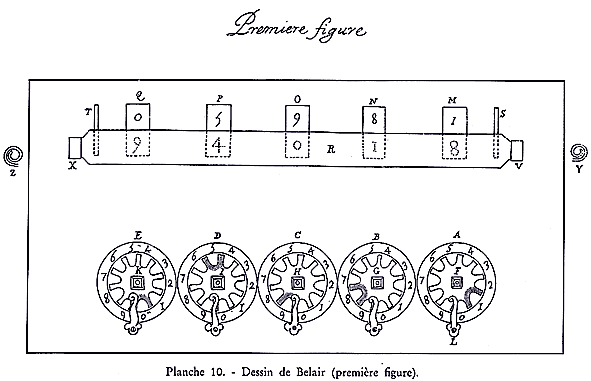Clearance of the pascaline
Clearance of the pascaline (the marked spokes):
The manuscript " usage de la machine " gives the following method :
"before starting a calculus, you shift the sliding cover who lays over the display windows toward the edge of the machine. Then you have to set the marked spokes in order to read "0" on all the drums. This is done by setting the stylus in between the spokes that are marked with white paper and by turning the wheel until the needle stops it. This brings for each wheel the highest digit the drum can have, that is to say "9" for all the wheels devoted to the "Livres", "19" on the "sols" wheel and "11" on the "deniers" wheel. Then you you turn the last wheel on the right of only one position [...] afterwards all the drums will display "0"."
This part of the manuscript is interesting because this is the proof that the clearance of the pascaline was performed without the need of any mental calculation for the operator. The printed drums and the wheels for entering the numbers was bind by crown gears, they had a fixe relative position. A visible mark on the wheels (glued white paper) points out the place to put the stylus to initialize the pascaline (the same way the "C" letter points out the key to press to clear the pocket electronic calculators).
The marked spokes are present on all of the Blaise Pascal calculators we know today (stripes, varnish, little circular marks), sometimes not on all the wheels. The wheels are often not well positioned relatively to the printed drums, that is to say that when the marked spokes are placed to the stop needle, another digit than "9" appears in the display windows. This can be explained by the fact that during the 300 years passed since the making of the pascalines they have been dismounted and wrongly remounted. The reason why marked spokes exist has been forgotten but is explained in the manuscript " usage de la machine " written in the 18th century.
Clic on the drawing of Bellair to see a movie of the clearance of a decimal pascaline replica.
 |  |